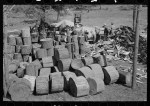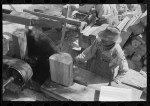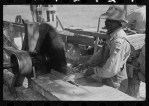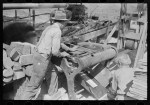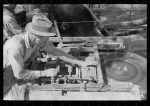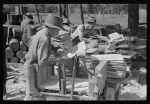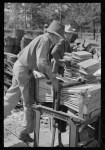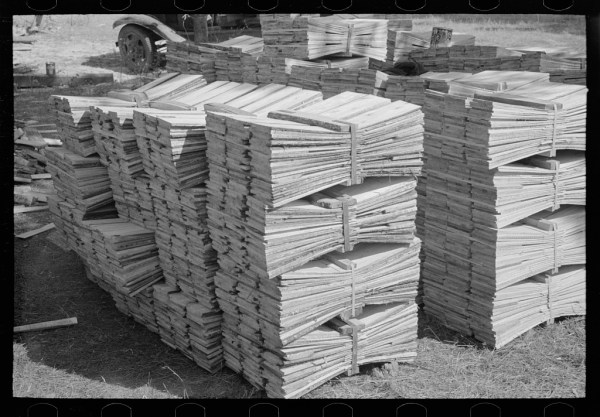
I have been interested in the communications of your correspondent in regard to shingles. I have had over thirty years’ experience in building and repairing roofs. I have taken rifted pine shingles from off several roofs that were worn entirely through, at the line where the water falls from one shingle upon the next one below, while underneath the courses the shingles were as bright as when first laid.
Such is not the fact with sawed and cut shingles, from any kind of timber. The reason is, that sawed and cut shingles are cross-grained, so that water runs through the pores of the wood,—wets the under course, and, in wet seasons, seldom if ever dries.
The agents of decay are, air, water and heat. All are combined on a roof to produce decay, and you have the effect on all roofs made of sawed or cut shingles. I have replaced many roofs of sawed shingles, but they never were half worn; they were rotten and unfit to remain longer.
Let any one examine a sawed shingle, and he will find the grain severed and every pore, through which the sap was pumped up from the roots to the branches, is a water-pipe to conduct water through the shingle, instead of over it, as is done by a rifted shingle.
I advise every man, who has means to procure a rifted and shaved shingle, never to use a sawed or cut one. I think slate is the most economical and durable of all roofs. Tin will do well, and roofs with it will be laid more flat, thereby making less surface to cover. There may be compositions that will make good roofs, but I know of none I would accept as a gift, and I have tried several kinds. In choosing rifted shingles, don’t get those of twisted grain, so that one side will turn up and the other turn down.
Any person who will discover a cheap kind of roofing, that will endure our variable climate, will deserve the everlasting gratitude of his kind. But forever deliver me from sawed, and more especially cut shingles.
Correspondent—Boston Cultivator
The Canada Farmer – June 1, 1864
—Jeff Burks
